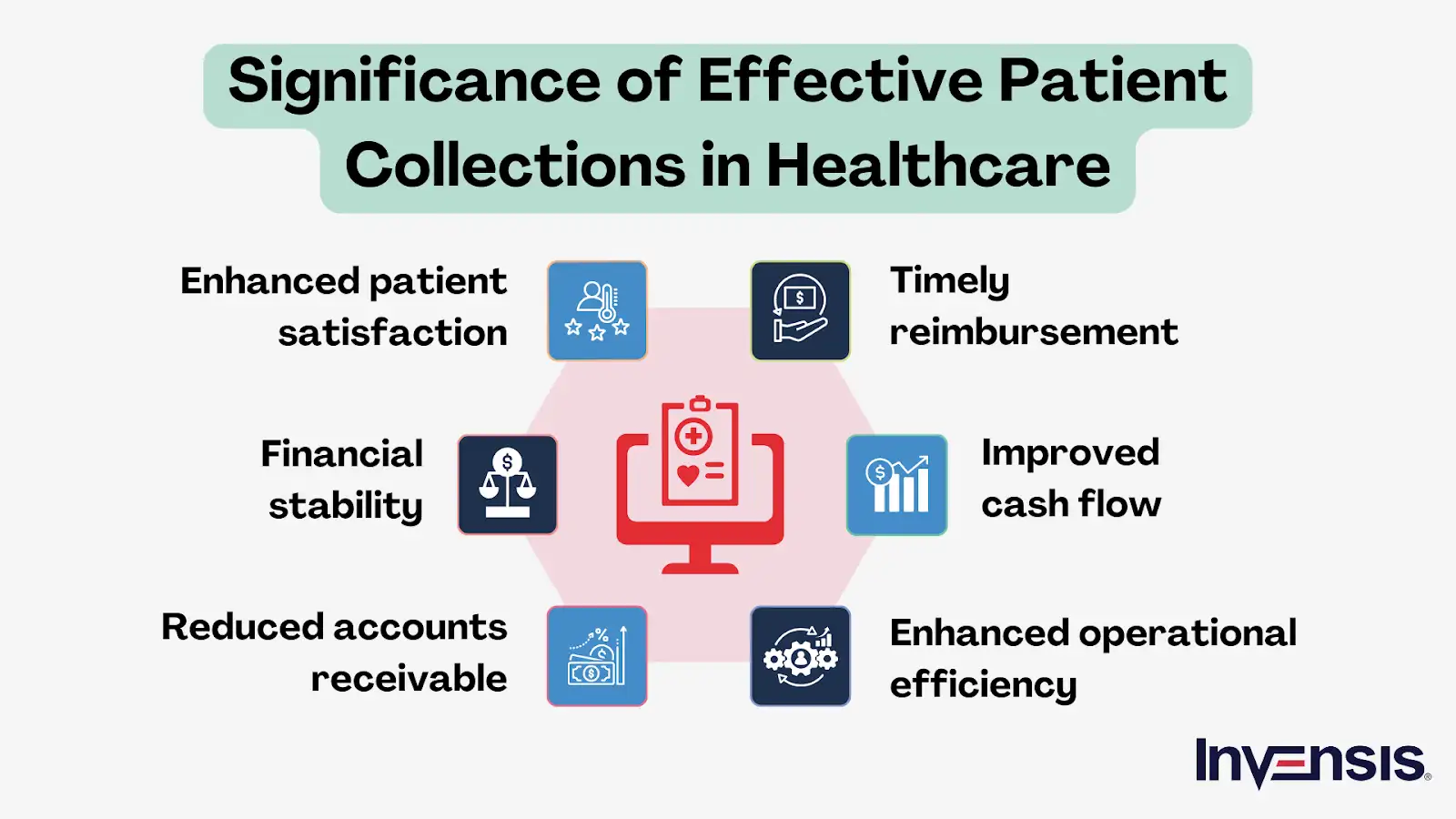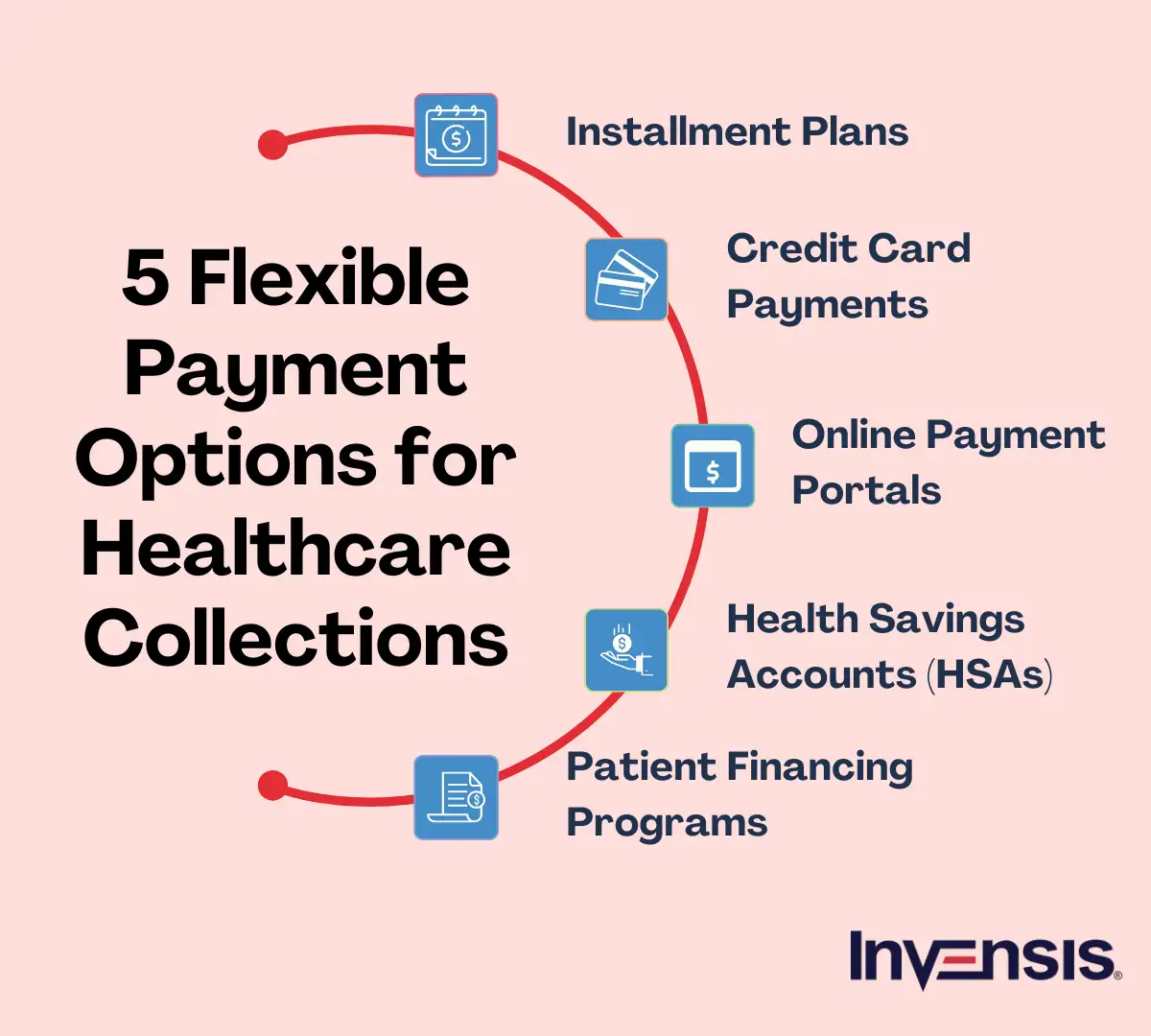
Content
Patient collection, also known as patient financial responsibility or patient payment collection, refers to the process of collecting payments from patients for healthcare services received. It plays an important role in the financial stability and sustainability of healthcare organizations.
However, patient collection can be challenging for healthcare organizations. This is primarily because patients often have varying levels of understanding regarding their insurance coverage and financial responsibilities, leading to confusion and potential resistance to making payments. Moreover, the sensitivity surrounding financial discussions can make patient collection emotionally draining.
In this blog, we will delve into five proven ways that will revolutionize your approach to patient collections.

Top 5 Strategies to Improve Patient Collections in Healthcare Business
Here are five effective strategies to enhance patient collections:
1. Streamline Billing Processes
Inefficient billing processes often result in delayed or inaccurate invoices, leading to patient confusion and frustration. Common challenges include coding errors, lack of price transparency, and delays in submitting claims. These issues can increase payment delays, reduce collection rates, and negatively affect patient trust.
Streamlining billing processes involves automating workflows, ensuring accurate coding, and offering clear billing statements. This enhances transparency, reduces errors, and speeds up claim submissions. By simplifying the payment experience, healthcare providers can minimize disputes, improve cash flow, and foster better patient relationships, ultimately boosting collection efficiency.
Steps to Streamline Billing Processes:
- Standardize billing procedures: Establish a clear and consistent billing process across your organization to minimize confusion and errors. Develop a standardized template for invoices and statements.
- Improve coding accuracy: Train your staff on accurate coding and documentation practices to reduce billing errors and claim rejections. Regularly update your coding practices to comply with the latest guidelines.
- Efficient claims submission: Utilize electronic claims submission to expedite the reimbursement process. Electronic claims are processed faster and have a lower chance of errors compared to manual submission.
- Timely claim follow-up: Implement a system for tracking unpaid claims and promptly follow up on them. Following up ensures that any issues or denials can be addressed promptly
2. Implement Clear and Transparent Pricing
Patients often face confusion and frustration due to unclear or hidden healthcare costs, making it challenging for them to plan their finances. This lack of transparency leads to billing disputes, delayed payments, and dissatisfaction, all of which hinder timely collections and strain patient-provider relationships.
Implementing clear and transparent pricing involves providing upfront cost estimates and detailed breakdowns of services. This builds trust, empowers patients to manage their expenses, and reduces billing conflicts. By fostering transparency, healthcare providers can encourage prompt payments, streamline collections, and strengthen patient loyalty.
- Publish a price list: Create a comprehensive list of common procedures and services that patients can access easily. This transparency helps patients understand the cost of their care upfront and avoids surprises.
- Educate patients on costs: Train your staff to proactively communicate with patients about the potential costs associated with their treatment. Training includes discussing insurance coverage, co-pays, deductibles, and out-of-pocket expenses.
- Provide estimates: Offer patients cost estimates for their procedures or treatments beforehand. Estimates allow them to plan and make informed decisions regarding their healthcare expenses.
- Clarify billing statements: Ensure that billing statements are easy to understand and provide detailed information about the services rendered and associated costs. Itemize charges and explain any codes or abbreviations used.
3. Offer Flexible Payment Options
Rigid payment structures can create financial strain for patients, leading to delayed payments or missed collections. Common challenges include patients being unable to afford large lump-sum payments or feeling overwhelmed by complex billing systems, which can hinder timely payments and create collection difficulties.
Offering flexible payment options, such as payment plans, online portals, or financing, allows patients to pay in manageable installments. This increases the likelihood of timely payments, reduces outstanding balances, and enhances patient satisfaction. By accommodating various financial situations, healthcare providers can significantly improve collection rates and maintain positive patient relationships.
- Installment plans: Implement payment plans that allow patients to spread their healthcare expenses over a defined period. Set up automatic payments or send reminders to ensure timely payments.
- Credit card processing: Accept payments through credit and debit cards to provide convenience to patients. Offer secure online payment options to make it easier for patients to settle their bills.
- Patient financing: Collaborate with third-party financing companies that specialize in healthcare financing. Financing enables patients to apply for loans or credit, specifically for medical expenses.
- Discount for upfront payment: Encourage patients to pay in full by offering a discount or incentive. Discounts can motivate patients to settle their bills promptly.

4. Enhance Communication with Patients
Poor communication with patients can lead to misunderstandings about billing, causing delayed payments and disputes. A lack of proactive communication regarding outstanding balances or insurance claims often results in confusion and frustration, which directly impacts collection efforts and delays revenue flow.
Enhancing communication involves sending timely reminders, offering clear explanations of charges, and being responsive to patient inquiries. This helps ensure that patients understand their financial responsibilities and feel supported throughout the payment process. Improved communication encourages prompt payments, reduces billing errors, and strengthens trust, ultimately improving collections and patient satisfaction.
- Pre-visit communication: Before appointments or procedures, communicate with patients to remind them about their financial responsibilities, insurance information, and any necessary paperwork.
- Patient education: Educate patients about insurance coverage, co-pays, and deductibles. Provide written materials or online resources that explain common billing terms and processes.
- Clear payment expectations: Set clear expectations regarding payment due dates and consequences for late or non-payment. Expectations can be communicated through signage, brochures, or during patient interactions.
- Prompt response to inquiries: Train staff to respond promptly and empathetically to patient inquiries related to billing or payment concerns. Addressing concerns and providing timely information helps build trust and enhances patient satisfaction.
5. Utilize Technology and Automation
Manual billing processes are prone to errors, inefficiencies, and delays, which hinder timely collections. Challenges like human error, paperwork, and lengthy follow-ups can significantly slow down the payment cycle, leading to higher accounts receivable and increased operational costs.
Utilizing technology and automation streamlines billing, claim submissions, and follow-up processes. Automated reminders, electronic statements, and online payment systems reduce administrative burdens and accelerate collections. By minimizing human error and optimizing workflows, healthcare providers can improve payment accuracy, reduce delays, and increase collection efficiency, leading to better cash flow management.
- Electronic health records (EHR): Implement an EHR system that integrates with billing processes to streamline documentation and billing. EHRs reduce manual errors and enhance efficiency.
- Online patient portals: Provide patients with secure online portals where they can access their billing statements, make payments, and communicate with your organization. This self-service option improves convenience and reduces administrative workload.
- Automated payment reminders: Utilize automated systems to send payment reminders via email, text messages, or phone calls. It reduces the chances of missed or late payments.
- Electronic payment processing: Implement electronic payment systems that allow patients to make payments online or through mobile applications. It simplifies the payment process and improves collection rates.
Conclusion
Improving patient collections is critical to running a successful healthcare practice. The complex nature of the healthcare billing landscape, changing regulations, and the need for specialized expertise can make the task overwhelming for in-house teams. Partnering with a specialized third-party provider can significantly improve patient collection outcomes.
Invensis brings over two decades of experience providing healthcare businesses with tailored medical accounts receivable services to clients based in the US. Our expertise and proven strategies have helped our clients streamline their patient collections process, ensuring timely and accurate payments. Contact us today to learn how our proven strategies can revolutionize patient collection efforts.
Discover Our Full Range of Services
Click HereExplore the Industries We Serve
Click HereBlog Category
Related Articles

Find the leading accounting firms in Singapore trusted by businesses for audit, tax, and advisory services.
November 6, 2025
|

Explore the leading accounting firms in South Africa providing expert audit, tax, cloud accounting, and payroll services. Learn about their key features and unique offerings.
November 6, 2025
|

Explore what project accounting is, how it works, and why it’s essential for businesses. Understand key principles, revenue recognition methods, and best practices to improve your knowledge.
October 7, 2025
|
Services We Provide
Industries We Serve







.webp)